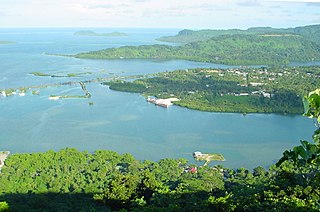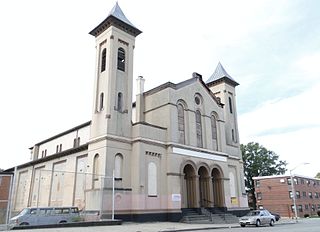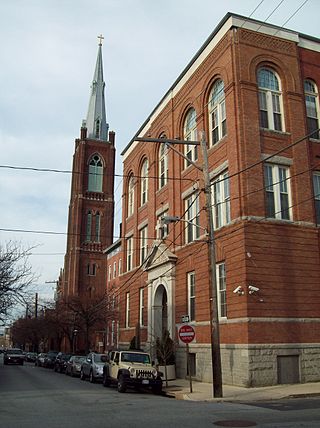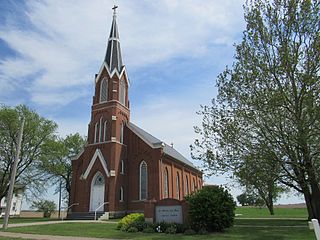
The Federated States of Micronesia is an island country in Oceania. It consists of four states—from west to east, Yap, Chuuk, Pohnpei and Kosrae—that are spread across the western Pacific. Together, the states comprise around 607 islands that cover a longitudinal distance of almost 2,700 km (1,700 mi) just north of the equator. They lie northeast of Indonesia and Papua New Guinea, south of Guam and the Marianas, west of Nauru and the Marshall Islands, east of Palau and the Philippines, about 2,900 km (1,800 mi) north of eastern Australia, 3,400 km (2,100 mi) southeast of Japan, and some 4,000 km (2,485 mi) southwest of the main islands of the Hawaiian Islands.

Pohnpei is an island of the Senyavin Islands which are part of the larger Caroline Islands group. It belongs to Pohnpei State, one of the four states in the Federated States of Micronesia (FSM). Major population centers on Pohnpei include Palikir, the FSM's capital, and Kolonia, the capital of Pohnpei State. Pohnpei Island is the largest with an area of 334 km2 (129 sq mi), and a highest point of 782 m (2,566 ft), the most populous with 36,832 people, and the most developed single island in the FSM.

Pohnpei State is one of the four states of the Federated States of Micronesia (FSM). The other states are, from east to west, Kosrae State, Chuuk State, and Yap State. The state's main island is Pohnpei.

Kolonia is a coastal town and the capital of Pohnpei State in the Federated States of Micronesia (FSM). It was also the former FSM capital before being replaced by Palikir in 1989, located nearby to the southwest in the municipality of Sokehs. It has 6,074 people.

Saint Francis de Sales Cathedral is a Catholic cathedral and parish church located in Baker City, Oregon, United States. Completed in 1908, it is the seat of the Diocese of Baker. The cathedral church and the parish rectory were included as contributing properties in the Baker Historic District, listed on the National Register of Historic Places, in 1978.

St. Joseph Church is parish of the Roman Catholic Church in Cumberland, Rhode Island within the Diocese of Providence. It is known for its historic campus at 1303 Mendon Road, which includes a Gothic Revival style church along with two late 19th-century, clapboard-sheathed, wood-frame structures on the east side of Mendon Road. The church and its accompanying buildings were added to the National Register of Historic Places in 1982 as St. Joseph's Church Complex.

St. Mary Catholic Church is a parish of the Roman Catholic Church in Indianapolis, Indiana, in the Archdiocese of Indianapolis.

Saint Joseph's Roman Catholic Church was a historic Roman Catholic church building in Mobile, Alabama, United States. It served as the parish church for St. Joseph's Parish in the Roman Catholic Archdiocese of Mobile.

St. Alphonsus Church, Rectory, Convent and Halle, also known as St. John Neumann Shrine and "Baltimore's Powerhouse of Prayer," is a historic Roman Catholic church complex located within the Archdiocese of Baltimore in Baltimore, Maryland, United States. Since 1992, the parish has held regular Tridentine Masses. It is currently administered by the Priestly Fraternity of Saint Peter.

St. John the Evangelist Roman Catholic Church, now known as Sweet Prospect Baptist Church, is a historic Roman Catholic church located at Baltimore, Maryland, United States.

Holy Cross Roman Catholic Church is a historic Roman Catholic church complex located within the Archdiocese of Baltimore in the Federal Hill neighborhood of Baltimore, Maryland, United States.

Saints Peter and Paul Roman Catholic Church is a former parish church of the Diocese of Davenport. The church is located southeast of Harper, Iowa, United States, in Clear Creek Township, Keokuk County. The church building was individually listed on the National Register of Historic Places in 1986. The parish property was listed as a historic district in 2021. The parish was known in the Davenport Diocese as Saints Peter and Paul, Clear Creek.

The Cathedral of Our Lady of Lourdes is a Catholic cathedral in Spokane, Washington, United States. It is the seat of the Diocese of Spokane. It is listed on the National Register of Historic Places as a contributing property to the Riverside Avenue Historic District, and its adjacent rectory building is listed as a secondary contributing property to the district.
The German Cemetery is a historic cemetery in Kolonia, the capital of Pohnpei State in the Federated States of Micronesia. Pohnpei and the other Caroline Islands had become a German protectorate in 1899, after the Spanish–American War, and were administered as part of German New Guinea. This cemetery is a historical reminder of the period of German administration, although it was in deteriorated condition in 1976, accessible only by hiking through a mangrove swamp, with its wrought iron fence and gate in disrepair. Two German governors were buried here.
The Japanese Hydro-electric Power Plant is a former hydroelectric power generation plant and historic site in Kolonia, the capital of Pohnpei State in the Federated States of Micronesia. The site is historically and culturally important as a representative of three different eras in the island's history. The site is important in the culture of Pohnpei as a location of high-quality stones gathered for use in ritual ceremonies involving the pounding of kava and drinking preparations from the plant. In the early 1900s, when Pohnpei was administered as part of German New Guinea, the German administration established an experimental forest, planting a diversity of trees from around the world, some of which continue to thrive in the area. Finally, in the 1920s, during the Japanese South Seas Mandate, a hydroelectric facility was built here. When the property was listed on the United States National Register of Historic Places in 1976 the concrete power plant building and water catchment basin survived.
The Japanese Shrine is a Shinto shrine in Kolonia, the capital of Pohnpei State in the Federated States of Micronesia. The official name at that time was "Nan'yō Government Ponape National School Ho an den".
The Spanish Wall is the deteriorating remnant of Spanish Fort Alphonso XIII in Kolonia, the capital of Pohnpei State in the Federated States of Micronesia. When built, the wall was about 0.5 miles (0.80 km) in length and 8 feet (2.4 m) in height with a parapet that ranged in height from 2–3 feet (0.61–0.91 m). The wall was built by Spanish administrators of Pohnpei in 1887 after a local uprising drove the local Spanish authorities onto a ship in the harbor. Most of the wall was taken down by the German administration that took over in the early 20th century, after the Spanish–American War. The remains of the wall, about 700 feet (210 m) and two arches, are now part of a local park.
The Sokehs Mass Grave Site is the location where fifteen participants of the 1910/1911 Sokehs Rebellion on the island of Pohnpei were buried by German colonial authorities. The rebellion broke out in October 1910 on Sokehs Island and was suppressed by German naval forces by early 1911. At a summary trial of 36 Sokehs rebels, 17 were convicted of murder and insurrection, and 15 subsequently executed by firing squad and buried in this mass grave. All members of the Sokehs tribe were then exiled to Babelthuap. The mass grave site is a roughly square area 16 feet (4.9 m) on each side, surrounded by a low stone wall. The site is now identified by a memorial marker.
The Japanese Elementary School for Ponapean Children is a historic school building in Kolonia, the capital of Pohnpei State in the Federated States of Micronesia. The surviving building is one of two reinforced concrete buildings, constructed c. 1920-21 by the Japanese authorities of the South Seas Mandate, which included the island of Pohnpei, then known as "Ponape". These buildings were the sole educational facility on the island for native children, those of Japanese dependents attending a separate, segregated facility. They were heavily damaged by bombing during World War II, with one of them being demolished and the other restored for use as part of the island's hospital.

The Campaneyan Kriso Rai, also known as the Catholic Belltower, is a historic church tower in Garapan, the largest village on Saipan island in the Northern Mariana Islands. Built in 1932, it is the only element of the island's most prominent Roman Catholic church to survive bombardment in World War II. The tower, a concrete structure 3 meters (9.8 ft) square and 10 meters (33 ft) tall, was built by Spanish Jesuits brought in by the Japanese South Seas Mandate administration, and stood next to an 1860 wood-frame church.

















